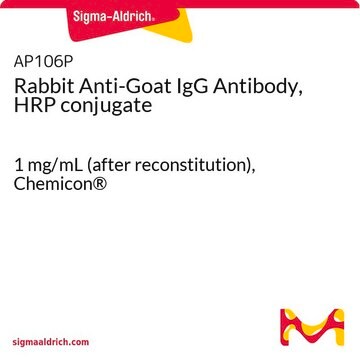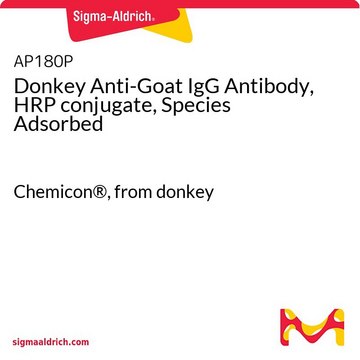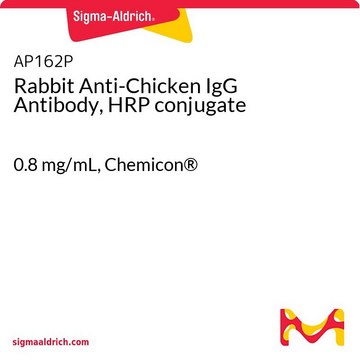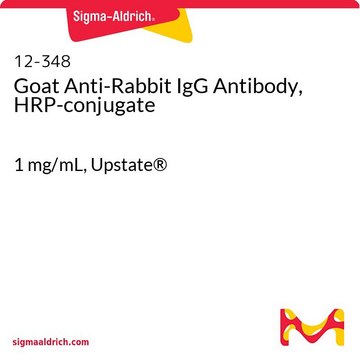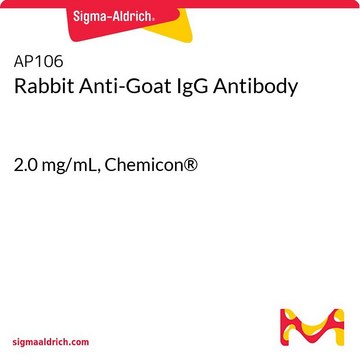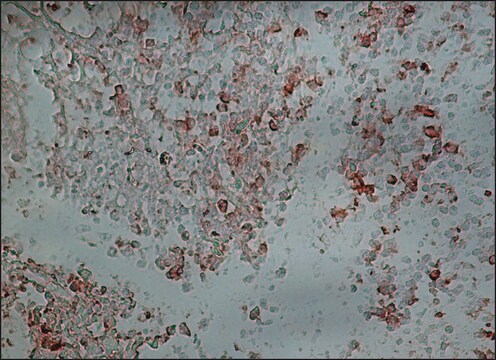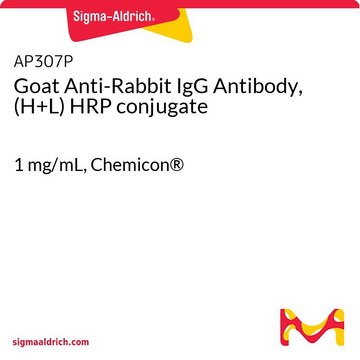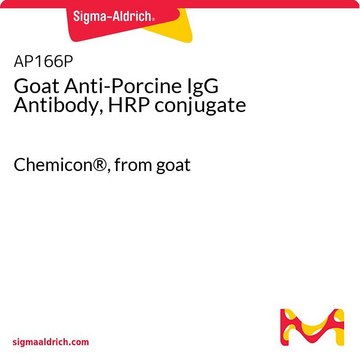AP107P
Rabbit Anti-Goat IgG Antibody, Fc, HRP conjugate
1.0 mg/mL, Chemicon®
About This Item
Empfohlene Produkte
Biologische Quelle
rabbit
Qualitätsniveau
Konjugat
peroxidase conjugate
Antikörperform
F(ab′)2 fragment of affinity isolated antibody
Antikörper-Produkttyp
secondary antibodies
Klon
polyclonal
Speziesreaktivität
goat
Hersteller/Markenname
Chemicon®
Konzentration
1.0 mg/mL
Methode(n)
ELISA: suitable
western blot: suitable
Versandbedingung
wet ice
Posttranslationale Modifikation Target
unmodified
Spezifität
Anwendung
Sekundär- & Kontrollantikörper
Fragmentspezifische Sekundärantikörper
Immunohistochemistry 1:500 - 1:5,000
Optimal working dilutions must be determined by the end user.
Physikalische Form
RECONSTITUTION:
Reconstitute with sterile distilled water to match the volume indicated on the label. Centrifuge product if it is not completely clear after standing for 1-2 hours at room temperature.
Lagerung und Haltbarkeit
WARNING:
Use of sodium azide as a preservative will substantially inhibit the enzyme activity of HRP.
Rechtliche Hinweise
Haftungsausschluss
Sie haben nicht das passende Produkt gefunden?
Probieren Sie unser Produkt-Auswahlhilfe. aus.
Lagerklassenschlüssel
11 - Combustible Solids
WGK
WGK 3
Analysenzertifikate (COA)
Suchen Sie nach Analysenzertifikate (COA), indem Sie die Lot-/Chargennummer des Produkts eingeben. Lot- und Chargennummern sind auf dem Produktetikett hinter den Wörtern ‘Lot’ oder ‘Batch’ (Lot oder Charge) zu finden.
Besitzen Sie dieses Produkt bereits?
In der Dokumentenbibliothek finden Sie die Dokumentation zu den Produkten, die Sie kürzlich erworben haben.
Unser Team von Wissenschaftlern verfügt über Erfahrung in allen Forschungsbereichen einschließlich Life Science, Materialwissenschaften, chemischer Synthese, Chromatographie, Analytik und vielen mehr..
Setzen Sie sich mit dem technischen Dienst in Verbindung.